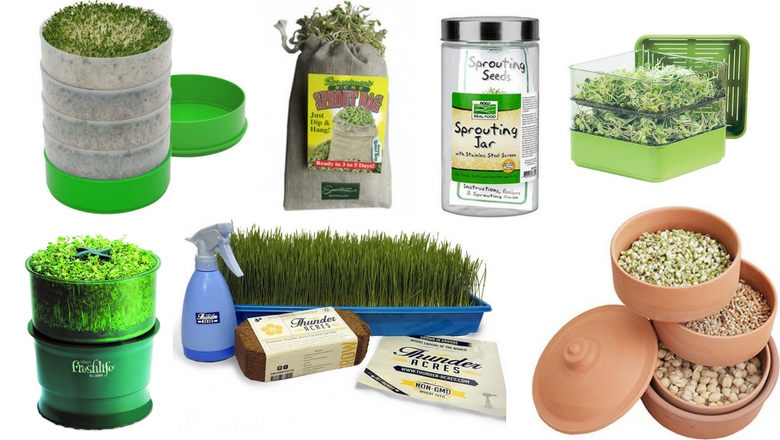
Growing your own sprouts at home with a seed sprouter is a great way to eat homegrown food even when you lack the time and space for an outdoor or indoor garden. It is an inexpensive and easy way to get more nutrition into your diet, plus it is simple enough that the whole family can get involved. Read on below to get started.
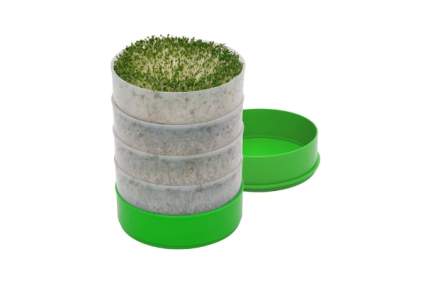
|
Amazon Customer Reviews
|
Price: $21.99 Shop at Amazon | Shop now Read our review |
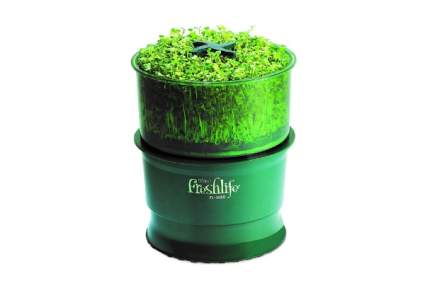
|
Amazon Customer Reviews
|
Price: $159.95 Shop at Amazon | Shop now Read our review |
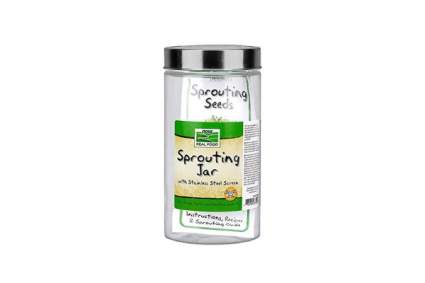
|
Amazon Customer Reviews
|
Price: $17.25 Shop at Amazon | Shop now Read our review |
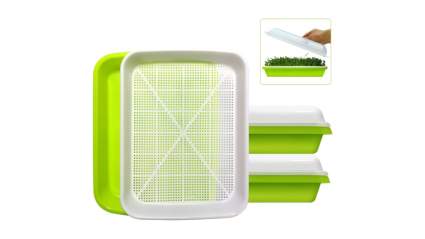
|
Amazon Customer Reviews
|
Price: $18.99 Shop at Amazon | Shop now Read our review |
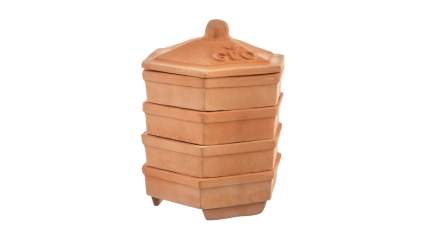
|
Amazon Customer Reviews
|
Price: $49.95 Shop at Amazon | Shop now Read our review |

|
Amazon Customer Reviews
|
Price: $35.49 Shop at Amazon | Shop now Read our review |
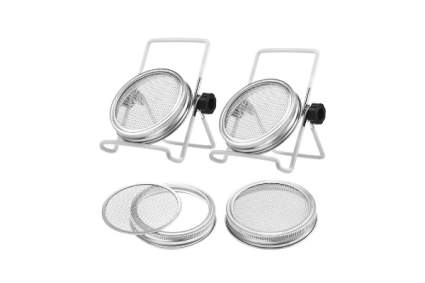
|
Amazon Customer Reviews
|
Price: $11.99 Shop at Amazon | Shop now Read our review |
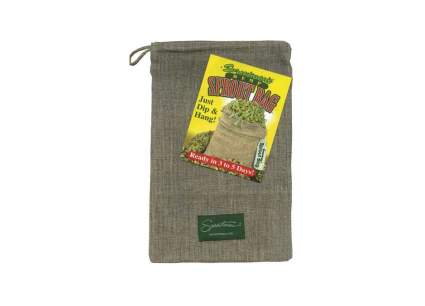
|
Amazon Customer Reviews
|
Price: $15.99 Shop at Amazon | Shop now Read our review |
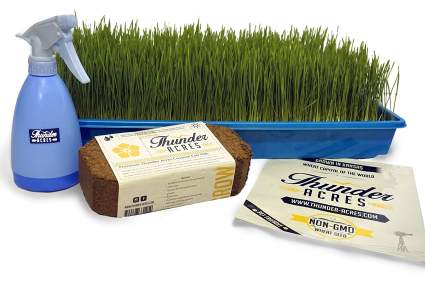
|
Amazon Customer Reviews
|
Price: $32.29 Shop at Amazon | Shop now Read our review |
-
1. EDITOR’S CHOICE: Kitchen Crop VKP1200 Seed Sprouter
Pros:- 4-tier design
- Uses less water than other sprouters
- BPA-free construction
Cons:- Can be bulky in small kitchens
- Seeds may get stuck in drain holes
- More complicated to clean than other sprouters
This innovative Kitchen Crop VKP1200 Seed Sprouter is my favorite readymade seed sprouting option because it is so easy to use and it uses less water than other designs. The sprouter comes with four trays, and you can purchase additional trays in order to stack up to 10 trays at once.
The VKP1200 is unique because of its watering system. You simply add water to the reservoir lid, and the hydrophobic irrigation channels allow the water to flow through each tray one after the other, providing just enough moisture for sprouts without over-watering. It is a little trickier to clean but the ease of use and the lightweight design make it a top choice.
Find more Kitchen Crop VKP1200 Seed Sprouter information and reviews here.
-
2. Best Automatic Seed Sprouter: Tribest Freshlife FL-3000 Automatic Sprouter
Pros:- Fully automatic watering
- BPA-free
- Large growing area and expandable up to three trays
Cons:- Plastic construction
- High price tag
- Some reviewers thought it overwatered
If you want your seed sprouting station to be a true set-it-and-forget-it situation, then this automatic sprouter from Tribest is for you. This Sprouting system has an automatic waterer inside and you can stack up to three additional trays (sold separately) on top if you want to grow multiple types of sprouts at one time.
Sprouting literally does not get any easier than this. The Freshlife sprouted is made of BPA-free plastic and has a detachable power cord included. It would make an excellent gift for any plant lover.
Find more Tribest Freshlife FL-3000 Automatic Sprouter information and reviews here.
-
3. Best Sprouting Jar: Now Foods Sprouting Jar
Pros:- Jar body is made out of glass
- Wide mouth for easy emptying
- Easy to use
Cons:- Does not come with stand
- Includes a small plastic ring around the edge of the lid
- Only one batch at a time
This sprouting jar from NOW foods is all you need to start sprouting right away. The jar is made out of glass and is a cylindrical shape for easy emptying when your sprouts are grown. The lid is made of stainless steel with a wire mesh.
This jar is made out of glass so there is much less risk of chemical contamination than plastic seed sprouters, but it is not 100% plastic-free. There is a plastic ring that lines the lid in order to create a watertight seal.
This jar also comes with an easy-to-use instruction guide on how to sprout seeds in 3-5 days. If you would rather use a plain mason jar, you can purchase wire mesh lids for sprouting here.
Find more Now Foods Sprouting Jar information and reviews here.
-
4. Best Sprouter Tray: SunPro 2-Pack Sprouter Tray
Pros:- Large grow space
- 2-Tier design
- Very easy to use
Cons:- Small seeds may fall through drain holes
- Large footprint
- Made of plastic
If volume is your main focus, then you need a pack of stackable SunPro Sprouter Trays. This set comes with two trays that measure 13.2 x 9.8 x 3 inches each, allowing you to sprout more seeds than you could in a jar. This sprouter has four parts – two sprouting trays, a vented lid, and a tray on the bottom to catch drips so that you do not have to place it in a dish or a stand to drain. It might not fit neatly on your countertop but it will produce large quantities of up to two different kinds of sprouts at once.
Find more SunPro 2-Pack Sprouter Tray information and reviews here.
-
5. Best Clay Sprouter: GEO Terradisiena 4-Tier Sprouter
Pros:- Beautiful terracotta style
- Four sprouting trays
- Lid and base included
Cons:- High price tag
- Drainage holes clog easily
- Easily breakable
If you want a multi-tier sprouting system that is not made of plastic, this earthy GEO Terradisiena 4-Tier Sprouter is a beautiful solution. This seed sprouter has four clay trays, a base, and a lid so you can grow many different types of seeds at one time. It is somewhat delicate but if you can keep it free from chips it will look beautiful
It is about seven inches wide and eleven inches tall, so you can keep a steady supply of green sprouts coming. Conversely, this thing takes up as much counter space as my compost bin. One complaint I have is that there are only a few drainage holes in each tray so they need to be unclogged more frequently. Still, this is a great and stylish way to sprout seeds in your kitchen.
Find more Happy Mills Terracotta Sprouter information and reviews here.
-
6. Best Stackable Sprouter: Handy Pantry Sprout Garden
Pros:- Lightweight and durable
- Three sprouting trays
- Expands to six or more trays
Cons:- Plastic construction
- Relatively small tray size
- High price tag
The Handy Pantry Sprout Garden is a three-tray seed sprouter that is super easy to use and allows you to grow multiple types of sprouts simultaneously. The sprouting trays stack on top of one another and block the light until you are ready to green up your sprouts at the end of the growing cycle. The stackable design means that you can purchase multiple kits if you want and stack them even higher without taking up extra counter space. The container is made in the USA of BPA-Free plastic.
As a bonus, each kit comes with three starter seed packs: alfalfa, a five-part salad mix, and a protein powerhouse mix.
Find more Handy Pantry Sprout Garden information and reviews here.
-
7. Best Mason Jar Sprouting Lids: Litthing 2-Pack
Pros:- Plastic-free construction
- Convenient to set up and use
- Durable and machine-washable
Cons:- Single-tray design
- No jars included
- Looks low-tech
Growing sprouts in jars is easy, does not require as much cleaning as more complex systems, and does not expose your sprouts to plastic containers. The challenge with sprouting in jars is that you have to store the jars either in a bowl or resting on a towel at an angle so that they can continue to drain in between rinses.
This Jar Sprouting Lid system from Litthing solves the problem by including lids as well as stands for your sprouting jars. Each kit comes with four stainless steel mesh lids and two stainless steel stands.
Find more Litthing 2-Pack Mason Jar Sprouting Lids information and reviews here.
-
8. Best Sprout Bag: Sproutman Hemp Sprout Bag
Pros:- Small footprint
- Can also be used as a nut milk bag
- Simple and durable construction
Cons:- Needs hand washing after use
- Seeds can get caught in corners
- Requires more steps than a planter
The Sproutman Hemp Sprout Bag is an inexpensive and super easy way to grow sprouts. It is super simple to use – Just soak your seeds overnight, pour them into the bag, rinse them, and then when it is time to rinse each day just dip the bag into a bowl of water and hang it to dry.
The instructions recommend keeping the bag in a bowl after it finishes dripping so that it does not dry out entirely. In just a few days, you will have sprouts! You can roll down the sides of the bag to let some sunshine in so that they get green in the last day or two of growth.
You can also use this bag as a nut milk bag. I have made hazelnut and almond milk with it, and find it to be very durable and well-constructed.
Find more Sproutman Hemp Sprout Bag information and reviews here.
-
9. Best Wheatgrass Sprouter: Organic Wheatgrass Growing Starter Kit
Pros:- Includes everything needed to grow wheatgrass
- Heavy-duty and durable trays
- Includes non-GMO, organic seeds
Cons:- Plastic construction
- Only enough supplies for three grows
- Not very many reviews on Amazon
Growing and juicing your own wheatgrass using a seed sprouter tray is another easy way to enjoy sprouts at home. Wheatgrass juice has a host of nutritional and health benefits to offer, including digestive enzymes, antioxidants, and chlorophyll.
This Organic Wheatgrass Growing Starter Kit comes with everything you need to get started. It has a growing tray, coconut coir grow medium, organic red wheat seeds, and a spray bottle for watering. The seeds are grown on their farm in Kansas and are 100% organic and non-GMO.
Find more Organic Wheatgrass Growing Starter Kit information and reviews here.
How Do Seed Sprouters Work?
Using a seed sprouter is incredibly easy and does not take a green thumb to achieve delicious results. Different types of seed sprouters have some slight nuances but the core concept is the same: soak, rinse, and wait.
First, soak your seeds overnight to germinate, placing 2-4 tablespoons of seed per jar or tray. Later, drain yoa to five days you will have sprouts with long tails.
You can either eat them as is, or leave them in a sunny spot for a day or two to develop more chlorophyll.
Typically, sprouts have been grown under dark conditions out of direct sunlight, because this mimics the environment of seed growing naturally under a layer of dirt, but research has come out to challenge whether this is the best method.
If you have counter space that receives sunlight, you may want to grow your sprouts there for the entire time, instead of in a dark corner or cabinet. Some studies have shown that in broccoli sprouts in particular, growing them in sunlight significantly increases the amount of Vitamin C, glucosinlolates and phenolic compounds. Other studies suggest that sprouting in sunlight boosts flavinoids such as quercitin as well.
Which Seeds Are Best For Sprouting?
Considering that any and all edible seeds can be sprouted, this is a complicated question. Aside from a few exceptions that are a little more complicated to prep, it's equally easy to sprout everything from vegetable seeds like broccoli, to greens like kale and spinach, or even beans and legumes like garbanzos and lentils.
Vegetable and leafy green seeds tend to produce delicate, long-tailed sprouts with little leaves. These are perfect additions to sandwiches, salads, or on top of just about anything. Some, like radishes, have a spicier taste while others, like alfalfa, are milder.
Sprouted beans and legumes are much crunchier and have shorter tails. You can use them for making dips like raw hummus, or add them to anything that you think could use a nice crunch.
Keep in mind that some red kidney beans in particular contain a toxin that must be heated at high temperatures to prevent food poisoning, as reported by The Independent. These beans should be soaked for at least 12 hours and can be sprouted prior to cooking, but it is imperative to never skip boiling with these types of beans.
Are Sprouted Seeds Good For You?
Like most foods that come from nature, sprouted seeds are a great part of any diet. They contain vital nutrients, digestive enzymes, and antioxidants that are so desperately needed in modern diets.
And what's interesting is that sprouted seeds are actually better for you then non-sprouted seeds. That's because sprouting seeds unlocks their nutrient-rich potential and makes them easy to eat and easy for our bodies to digest.